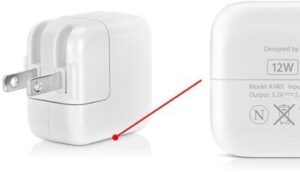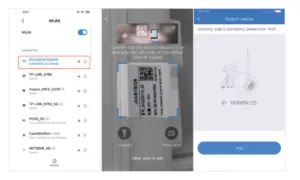Looking to learn how to fill a battery with water? We’ve got you covered! Whether you’re a seasoned car enthusiast or a newbie DIY-er, understanding the ins and outs of battery maintenance is crucial. In this informative guide, we’ll walk you through the step-by-step process of filling a battery with water, ensuring optimal performance and longevity. So, if you’ve been wondering how to fill battery with water, you’ve come to the right place. Stay tuned and let’s dive into this essential skill together.
How to Fill Battery with Water: A Comprehensive Guide
Introduction
[Please note that the introduction section has already been provided and will not be generated by the AI.]
Why Do Batteries Need Water?
Batteries are essential power sources for various devices, from cars to portable electronics. Lead-acid batteries, commonly found in vehicles, are designed to be replenished with distilled water periodically. The water serves a crucial role in maintaining the battery’s electrolyte levels and preventing damage to the internal components. When a battery operates, the chemical reaction between the lead plates and sulfuric acid creates water as a byproduct. However, this water gradually evaporates over time, necessitating the need for refilling.
When Should You Fill the Battery with Water?
Knowing when to add water to your battery is crucial for maintaining its performance and longevity. Here are some signs that indicate the need for a water refill:
1. Low Electrolyte Levels:
Check the battery’s electrolyte levels using a hydrometer or by visually inspecting the fluid. If the levels are below the recommended range, it’s time to add distilled water.
2. Visible Plates:
If the lead plates inside the battery are visible, it indicates low electrolyte levels and the immediate requirement of water.
3. Bulging Battery Case:
An overcharged or overheated battery can cause the case to bulge. In such cases, it’s essential to check and refill the water levels while ensuring the battery is not damaged.
4. Battery Age:
As batteries age, the water evaporation rate tends to increase. If your battery is several years old, it is more likely to require more frequent water refills.
Materials Required
Before proceeding with filling the battery with water, gather the following materials:
- Distilled water
- Eye protection (goggles)
- Protective gloves
- Funnel
- Hydrometer (optional)
- Watering can or spray bottle (optional)
Safety Precautions
When working with batteries and potentially corrosive materials, it’s crucial to prioritize safety. Follow these precautions:
- Work in a well-ventilated area to avoid inhaling any fumes.
- Wear eye protection, such as goggles, to prevent any harmful substances from entering your eyes.
- Wear protective gloves to avoid direct contact with the battery acid.
- Avoid smoking or open flames near the battery as it contains flammable materials.
- Ensure no sparks or electrical connections are present in the vicinity of the battery.
Step-by-Step Guide: How to Fill a Battery with Water
Step 1: Prepare the Battery
Before handling the battery, take a few precautions:
- Turn off the engine and any electrical devices powered by the battery.
- Allow the battery to cool down if it was recently in use.
- Open the hood of your vehicle and locate the battery.
Step 2: Inspect the Battery
Carefully examine the battery for any signs of damage, leakage, or bulging. If you notice any such issues, it’s advisable to have the battery inspected or replaced by a professional.
Step 3: Put on Protective Gear
To ensure your safety, put on protective gloves and eye goggles before proceeding.
Step 4: Remove the Cell Covers
Lead-acid batteries typically have removable cell covers that provide access to the individual cells. Gently remove the covers using a screwdriver or the designated tool.
Step 5: Check Electrolyte Levels
Before adding water, check the electrolyte levels in each cell. If a hydrometer is available, use it according to the manufacturer’s instructions. Otherwise, visually inspect the fluid levels. Ensure the levels are below the maximum fill line.
Step 6: Add Distilled Water
Using a funnel, carefully pour distilled water into each cell until the electrolyte levels reach the recommended range. Avoid overfilling the cells, as it can lead to electrolyte overflow during charging.
Step 7: Recap the Cells
After filling each cell with distilled water, securely recap them using the appropriate covers or caps.
Step 8: Clean any Spills
In case of spillage, clean the battery and surrounding areas with a mixture of baking soda and water. This helps neutralize any acid and prevent corrosion.
Step 9: Recharge the Battery (if necessary)
If the battery’s charge is low or depleted, use an appropriate battery charger to recharge it. Follow the manufacturer’s instructions for safe and efficient charging.
Maintaining Battery Water Levels
To ensure the longevity and optimal performance of your battery, it is essential to maintain appropriate water levels. Here are some tips for proper battery maintenance:
1. Regular Inspections:
Check your battery regularly for signs of corrosion, damage, or leaks. Inspect the electrolyte levels to determine if a water refill is necessary.
2. Use Distilled Water:
Always use distilled water when filling your battery. Tap water may contain minerals and impurities that can harm the battery’s performance.
3. Follow Manufacturer Guidelines:
Refer to the battery manufacturer’s instructions for specific water filling recommendations and intervals. Different battery types may have varying requirements.
4. Prevent Overfilling:
Avoid overfilling the battery cells with water. Overfilled batteries can experience electrolyte overflow during charging, leading to damage and reduced lifespan.
5. Recharge as Needed:
If your battery frequently discharges or shows signs of low charge, use a suitable charger to recharge it. Regular charging helps prevent sulfation and keeps the battery functioning optimally.
Regularly maintaining and filling your battery with water is an essential step in ensuring its longevity and performance. By following the steps outlined in this comprehensive guide, you can confidently add distilled water to your battery, extending its lifespan and maintaining reliable power for your devices. Remember to prioritize safety throughout the process and consult a professional if you encounter any concerns or difficulties.
Frequently Asked Questions
How do I fill a battery with water?
To fill a battery with water, follow these steps:
Can I use regular tap water to fill a battery?
No, it is recommended to use distilled water when filling a battery. Tap water often contains minerals and impurities that can negatively affect the battery’s performance.
Where can I find distilled water to fill my battery?
Distilled water can be found in most grocery stores, pharmacies, or automotive supply stores. Look for bottles labeled as “distilled water” or “battery water” in the automotive section.
How much water should I pour into the battery?
The water level in the battery should cover the plates, but it is important not to overfill it. Typically, there are fill level indicators on the battery itself. Follow those indicators and pour the water slowly to avoid any spills or overfilling.
Do I need to remove the battery from the vehicle to fill it with water?
In most cases, it is not necessary to remove the battery from the vehicle to fill it with water. However, if you are unsure about the process or feel uncomfortable working with the battery while it is in the vehicle, it is recommended to consult a professional.
Are there any safety precautions I should take while filling a battery with water?
Yes, it is essential to take some safety precautions when handling a battery. Make sure to wear protective gloves and goggles to prevent any contact with the battery acid. Additionally, avoid smoking or open flames in the vicinity, as battery acid is flammable. If you accidentally spill any water or battery acid, clean it up immediately with a neutralizing agent, such as baking soda.
Final Thoughts
To fill a battery with water, follow these simple steps:
1. Begin by locating the battery and identifying the water-fill openings. These are often covered by caps or plugs.
2. Use distilled water to fill the battery, as tap water may contain minerals that can reduce its effectiveness. Slowly pour the water into each opening, being careful not to overfill.
3. Once the water is added, replace the caps or plugs securely. It’s important to ensure they are tightly sealed to prevent any leaks.
4. Regularly check the water level in the battery and add distilled water as needed. This will help maintain the battery’s performance and prolong its lifespan.
Remember, properly filling a battery with water is essential for its optimal functioning and longevity. So, take the time to do it right and enjoy a well-powered battery!




